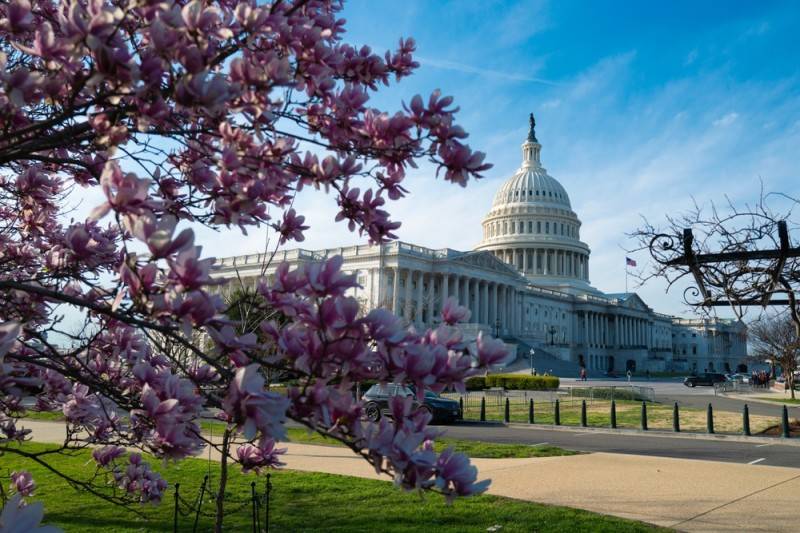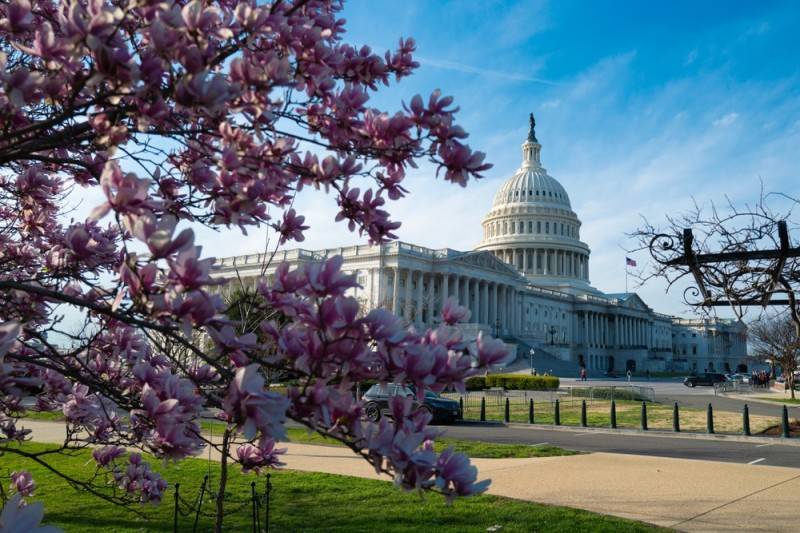Global Travel Market Dynamics: U.S. Leads, China Rises, Emerging Destinations in Focus
The Economic Impact Trends 2024 report, published by the World Travel & Tourism Council (WTTC), reveals the rich landscape and dynamics of the global travel and tourism market. The report shows that the United States remains the world's strongest travel and tourism market, contributing a record $2.36 trillion to the U.S. economy last year. Despite a slow rebound in spending by international travelers, the U.S., with its strong tourism resources and market appeal, has remained in the lead, contributing almost twice as much to the economy as its closest competitor.
The U.S., the world's strongest travel and tourism market, has significant strengths and characteristics in a number of areas, but also faces a number of challenges.

Source: Images from the Internet, if there is any infringement, please contact the removal of
Strengths:
Rich Tourism Resources: The U.S. is blessed with diverse natural landscapes, from the magnificent Grand Canyon to the beautiful Yellowstone National Park, and from the sunny beaches of Florida to the glacial snow-capped mountains of Alaska, which uniquely attract travelers from around the globe. The Grand Canyon, for example, is majestic, and its ghostly landforms attract millions of tourists every year to explore and see. In addition, the U.S. is home to many bustling cities such as New York, Los Angeles, and Chicago. New York's glittering Times Square is one of the world's commercial and cultural centers, bringing together countless stores, restaurants, theaters, and museums to provide visitors with a colorful experience; Los Angeles is home to Hollywood, with a strong film culture atmosphere, and theme parks such as Universal Studios are a popular destination for tourists.
Strong Cultural Influence: American popular culture, such as Hollywood movies, music, and sports, has a wide global influence. The Hollywood movie industry releases a large number of outstanding works every year, and these movies not only achieve great success at the box office, but also attract viewers to travel to the United States to explore the shooting scenes and the culture behind the movies. For example, the locations of some of the scenes in Forrest Gump have become places to which tourists aspire. Meanwhile, sports events in the United States, such as the NBA and the NFL, also attract a large number of sports enthusiasts to go to the scene to watch the matches, bringing considerable income to the tourism industry in the United States.
Perfect tourism infrastructure: The U.S. has a very perfect tourism infrastructure in terms of transportation, accommodation and catering. In terms of transportation, there is a well-developed network of air, rail and highway, which makes it convenient for tourists to travel to various attractions. The airports in major cities have advanced facilities and numerous air routes that can meet the needs of different tourists. In terms of lodging, the United States has a wide range of accommodations, from luxury five-star hotels to affordable bed and breakfasts, to meet the needs of tourists with different budgets. In terms of catering, the United States has a rich and diverse culinary culture. In addition to local fast food such as hamburgers and hot dogs, there are also cuisines from all over the world, such as Italian pizza, French steak, Japanese sushi, etc., which provide tourists with a wealth of choices.
Mature tourism industry system: The United States has a mature tourism industry with professional tourism service organizations and high-quality tourism employees. Tourism enterprises have rich experience and professional ability in marketing, product development and customer service. For example, some large tourism companies in the United States are able to provide tourists with one-stop tourism services, including air ticket booking, hotel booking, attraction ticket booking, tour guide services, etc., making tourists' travel more convenient and comfortable.
Challenges faced:
VISA ISSUES: Long waiting times for visas are a major problem facing the U.S. tourism industry. Visa interview appointments for inbound travel to the U.S. reportedly usually take more than a year, and sometimes more than two years. This is a huge obstacle for many travelers who want to visit the United States, making it likely that they will choose other countries with more liberal visa policies as destinations.
Security issues: Gun violence, violent crime and other security issues have been a persistent problem in American society and have negatively impacted the U.S. tourism industry. In particular, the frequent shootings across the United States in recent years have made many travelers concerned about the security situation in the United States. Last September, a survey of Chinese tourists conducted by the consulting firm morning consult found that 93% of Chinese tourists said gun violence and violent crime were reasons they avoided traveling to the United States.
Political factors: Changes in international political relations can also have an impact on U.S. tourism. For example, the number of Chinese tourists visiting the U.S. began to decline after the U.S.-China trade friction. The U.S. State Department reversed the Obama-era policy of allowing Chinese citizens to obtain five-year student visas and began limiting visas for Chinese graduate students to one year, which Biden continued after Trump left office, and all of these policy changes have adversely affected tourism exchanges between the U.S. and China.
Extreme Weather Impact: In recent years, extreme weather such as high temperatures, wildfires and storms have frequently struck across the U.S., dealing a severe blow to the tourism industry. For example, on July 30th of this year, a Category 3 hurricane “Idalia” landed in Florida, causing heavy losses to the local tourism industry, and many resorts were forced to shut down, and it took a long time to clean up the beaches and repair the drains and other facilities damaged by the hurricane.
Overall, although the U.S. tourism industry is currently in a leading position, but in order to maintain this position, there is still a need to overcome many challenges, and continue to improve the tourism environment and enhance the quality of tourism services, in order to attract more domestic and foreign tourists.
Among global travel markets, China's impressive rebound is underscored by its GDP contribution of US$1.3 trillion in 2023 as the world's second-largest travel market. Germany is in third place with an economic contribution of US$487.6 billion, while Japan jumps from fifth place in the 2022 rankings to fourth place, contributing US$297 billion. The U.K. and France are in fifth and sixth place, contributing $295.2 billion and $264.7 billion, respectively. Mexico, with its continued appeal, ranked seventh with $261.6 billion in tourism revenue. India moved up from its previous position of tenth to eighth, with tourism receipts of US$231.6 billion, marking significant progress in the tourism sector and highlighting its growing influence. Italy and Spain rounded out the top ten, contributing US$231.3 billion and US$227.9 billion respectively.
However, WTTC predicts that China will become the largest tourism market over the next decade, with India rising to fourth place. These changes demonstrate the dynamic nature of the global tourism industry, with emerging markets on the rise and traditional powerhouses remaining strong. The report also highlights the countries with the highest annual growth rates in tourism's contribution to GDP. in 2023, China's tourism industry soared at a staggering 135.8% year-on-year growth rate, demonstrating a strong potential for growth. Other Asian countries, such as Malaysia and the Philippines, are also recovering quickly following the lifting of travel restrictions. Julia Simpson, President and CEO of WTTC, said: “We look forward to a record-breaking year in 2024, when tourism is not only back on track, but also set to grow like never before. We will also continue to prioritize sustainability and inclusiveness to ensure that this growth benefits everyone. Tourism's resilience and potential for innovation will continue to drive us forward.”

Source: Images from the Internet, if there is any infringement, please contact the removal of
The report shows that many major destinations will benefit from a surge in international spending this year compared to pre-outbreak levels. Saudi Arabia saw a 91.3% increase in spending over 2019, with Turkey, Kenya, Colombia and Egypt also leading the way. Globally, international tourist spending will grow by nearly 16 percent to $1.9 trillion, while domestic tourist spending is expected to reach unprecedented levels at $5.4 trillion, a 10.3 percent increase over 2019 levels.Tourism investment grows by 13 percent to more than $1 trillion in 2023 and is projected to return to pre-pandemic levels by 2025.
Within the tourism dynamics of individual countries and regions, Chinese visitor numbers to Australia continue to climb. China is the largest source country for Australian inbound tourist arrivals and total spending in 2019. Since the resumption of Chinese outbound tourism last year, the number of Chinese visitors to Australia has continued to increase. The latest Australian government data shows that the number of Chinese tourists arriving in Australia in June this year has recovered to nearly 70% of the same period in 2019, up 11% year-on-year. Order data from major airlines show that the number of orders from Chinese tourists to Australia during the summer vacation this year has been increasing, showing a strong recovery in the heat of travel to Australia. The upcoming 11th Golden Week holiday is the peak for outbound long-haul travelers, and Australia's tourism industry is well prepared to welcome the arrival of Chinese tourists. Tourism Australia has signed a new three-year memorandum of cooperation with UnionPay International to bring Chinese tourists a smooth and efficient travel experience during the November holiday.

Source: Images from the Internet, if there is any infringement, please contact the removal of
The Singapore Tourism Board (STB) is also continuing to step up its efforts in the Chinese market. With the growing popularity of the “Made in Singapore” brand campaign, as well as the ongoing cultural exchanges between Singapore and China, Chinese tourists have become more and more passionate about Singapore. Following the entry into force of the Singapore-China Visa Waiver Agreement (VWA) on February 9 this year, China has resumed its role as one of Singapore's key sources of visitors. As of July this year, visitor arrivals from China to Singapore have recovered to 84% of the 2019 figure, with July's single-month visitor arrivals up by 24% compared to June, and 106% of the 2019 figure for the same period. Flights to and from Singapore from China have also recovered to 100 percent of 2019 figures. The Singapore Tourism Board (STB) continues to be deeply engaged in the Chinese market, paying close attention to the changing travel habits and needs of Chinese travelers, and is committed to creating refreshingly different experiences for them.
Thailand's tourism recovery continues to gain momentum. By the end of 2024, the country is expected to welcome around 36 million tourists, generating revenues of around US$53 billion. From January 1 to August 17, 2024, a total of 4,534,021 Chinese tourists visited Thailand. Undoubtedly, China remains Thailand's largest source market. The Tourism Authority of Thailand (TAT), together with the Tourism Association of Thailand (TAT), the National Research Institute (NRI) and the King Power Duty Free Group, led 60 Thai tourism enterprises and partners to organize the 2024 Thailand Tourism Presentation - China Roadshow Guangzhou in Guangzhou, and expects that the ongoing tourism activities and the upcoming China-Thailand Friendship Month will help the Thai tourism industry achieve the target of welcoming 7.3 million Chinese tourists in 2024, which is expected to exceed 8 million. The number is expected to exceed 8 million.

Source: Images from the Internet, if there is any infringement, please contact the removal of
South Korea is targeting young Chinese tourists and promoting its unique tourism resources. The Ministry of Culture, Sports and Tourism and the Korea Travel Industry Association (KTIA) invited travel agencies specializing in organizing group tours to China to collect tourism products, and selected a total of 16 tourism items with different themes, including culture, leisure and sports, security and peace, healing and recuperation, and local specialties. The number of Chinese tourists visiting Korea in the first half of this year has already exceeded the level of the whole of last year, with the proportion of group tours increasing and the proportion of young tourists growing rapidly. In order to attract Chinese tourists to extend their stay in Korea, the Ministry of Culture, Sports and Tourism will provide marketing expenses and promotional support for selected specific programs. Meanwhile, publicity and promotion will be carried out through the China office of the Korea Tourism Organization, and the selected projects will be supported to participate in expos in China. In terms of transportation, Tianjin Airlines officially opened direct flights to Jeju, South Korea, at Yulin Yuyang Airport. It is expected that with the steady recovery of direct flights between China and South Korea, South Korea will continue to become more attractive to Chinese tourists.

Source: Images from the Internet, if there is any infringement, please contact the removal of
Africa also continues to be a popular destination for Chinese tourists on outbound trips. In recent years, from exploring the ancient and mysterious Egyptian pyramids to witnessing the amazing animal migration in Kenya to visiting the blue and white towns of Morocco, many Chinese tourists are now choosing Africa for their vacations. Ctrip data shows that from February to August this year, the number of orders from Chinese tourists to Africa increased by about 1.2 times year-on-year. Flying Pig statistics show that this year's bookings for African airfare nearly doubled compared to the same period last year, with Egypt and Kenya seeing the fastest growth. Shanghai, Beijing, Guangzhou, Hangzhou, Chengdu, Nanjing, Chongqing, Xi'an, Xiamen and Qingdao are popular source cities for traveling to Africa. Where to go data show that this summer, Chinese tourists to Africa air ticket bookings increased 1.2 times year-on-year. The relevant person in charge of Tongcheng Travel introduced that from January to August this year, the average monthly number of tourists going to Egypt rose 200% compared with the same period last year. At present, the most visited African countries by Chinese tourists are Egypt, South Africa, Morocco, Kenya, Tanzania, Nigeria, Ethiopia, Tunisia, Mauritius and Ghana. Attractions such as the Pyramids of Khufu, Egyptian Museum, Giza Pyramid Complex, Sahara Desert, Abu Simbel Temple, Saladin's Castle, Mallorel Gardens, Kassela Nature Park, and the Old Town of Essaouira are the most popular.
The global tourism market is diversifying, with the leadership of the United States, the rise of China, and the spotlight on emerging destinations all presenting more opportunities and challenges for future tourism development. Various countries and regions are also taking active measures to attract more tourists and promote the continued prosperity of the tourism industry.
-------- END --------






